One bead at a time: Mi'kmaw artists bring 180-year-old regalia back to life
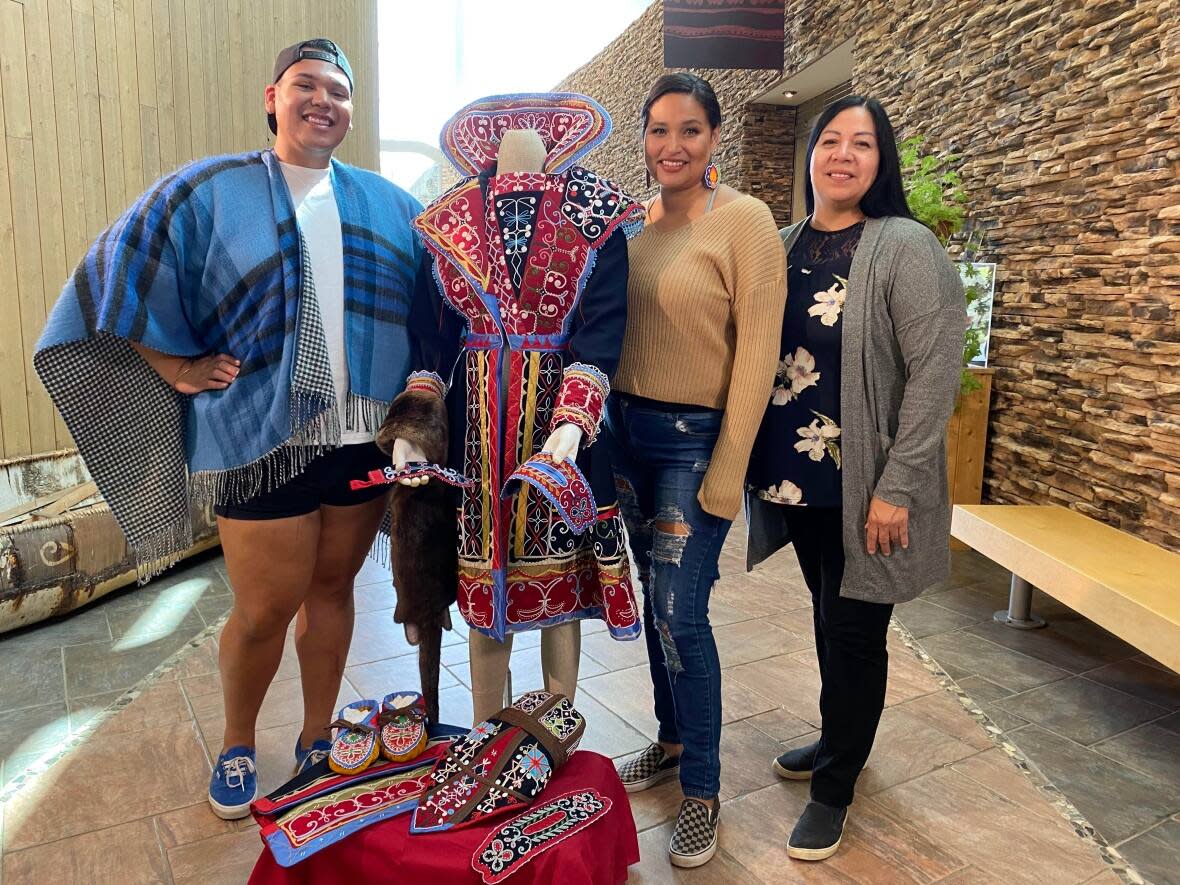
It took them 2,751 hours to finish.
The three Mi'kmaw artists, Sgoagani Mye Wecenisqon, Oakley Rain Wysote Gray and Ingrid Brooks, have completed a meticulous replica of a 180-year-old set of regalia.
And when they walked through the doors of the Metepenagiag Heritage Park, near Miramichi, to see their work on display for the first time, they were almost lost for words.
"It's so overwhelming and just was such a beautiful experience to recreate a part of our history," said Sgoagani Mye Wecenisqon, a designer from Esgenoôpetitj First Nation, in northeastern New Brunswick.
"A dream come true" is how she describes the opportunity to work on creating the coat.
The history of the regalia dates back to the early 1840s, when British Capt. Henry Dunn O'Halloran was given a ceremonial outfit by Mi'kmaw Chief Joseph Maly Itkobitch. O'Halloran was also made an honorary Mi'kmaw chief by Itkobitch for his work gathering census information on Mi'kmaq along the Miramichi River.
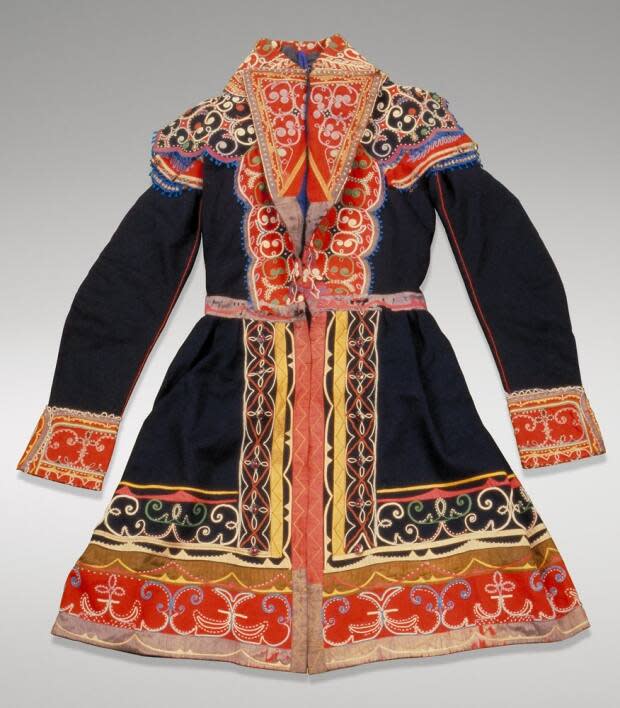
Four artists started the work in 2019, but one has since left the project. Work was also slowed down during the early days of the pandemic.
Lost history
The original regalia was crafted by three Mi'kmaw women who were not historically documented or acknowledged for their beadwork.
WATCH | Three Mi'kmaw artists describe the recreation of 180-year-old regalia now on display at the Metepenagiag Heritage Park:
Based on oral history, it is believed that two of these women may have been Annie Ginnish and Christina Morris, likely from Esgenoôpetitj First Nation, but the research remains inconclusive.
Wecenisqon said in a way, re-creating the coat is giving the original creators the recognition that they never received.
"Their names at the time in history weren't honoured or anything," she said. "I think in another sense that this is another way to honour the ones who made this beautiful project."
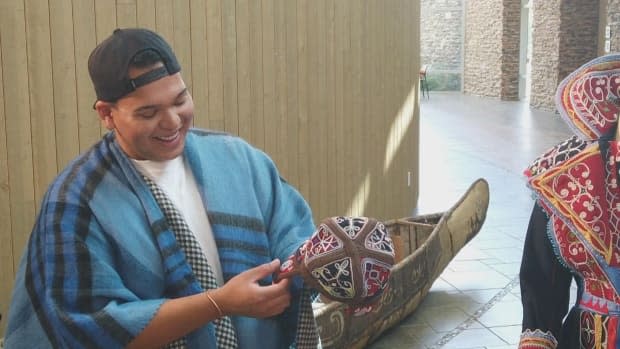
Wecenisqon had never attempted traditional beadwork in the past so she felt nervous when it came to working on the regalia. She hopes this project serves as an inspiration for young people like herself who have questions and are curious about traditional beadwork.
Ingrid Brooks of Indian Island First Nation said it's important to keep this history alive.
"I would just love our next generation to learn how to do the florals, how to do the double curves, how to do the leaves … and for them to put this on their regalias," she said. "It's for the next generation."
Brooks said she thinks this replica will live on for 200 or 300 years and then more people will come along and remake it once again.
"I'm just grateful to be part of this history," she said.
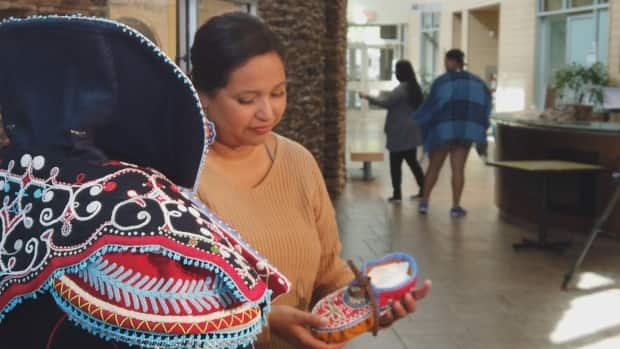
The original coat is believed to have been created by local artists but is now housed at the Canadian Museum of History in Gatineau, Que., where it will remain stored indefinitely because of its fragile condition.
Oakley Rain Wysote Gray, of Listiguj First Nation, said having this replica at Metepenagiag Heritage Park is "like having a piece of history come home."
One bead at a time
The artists worked on the intricate coat one or two beads at a time, with each artist taking on different sections of the coat, including the accessories that go with it. When all sections were complete, it was stitched together on industrial sewing machines at the New Brunswick College of Craft and Design in Fredericton.
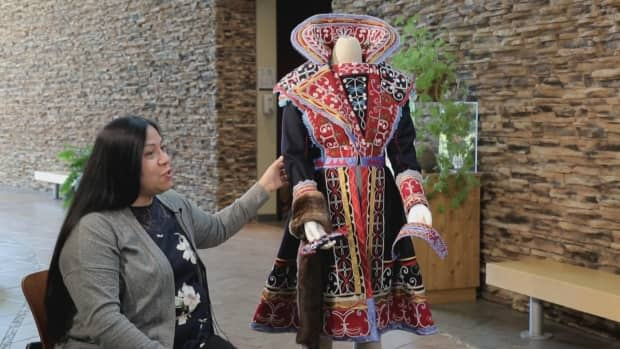
When Brooks first saw the original coat at the museum in Quebec, she was impressed by the sheer quantity of the beadwork.
"I really wanted to do it," she said. "So when they said, 'we're going to have three different designers come in, you guys work as a team,' I was all for it."
Brooks said the original coat is so fragile that it can't be touched, and it's falling apart.
She said the process began on paper with making the templates.
"Each bead on here, it's counted, it's laid flat, it's stitched down, and it's time consuming," said Brooks.
She said each double-curve would take around two to three hours to complete.
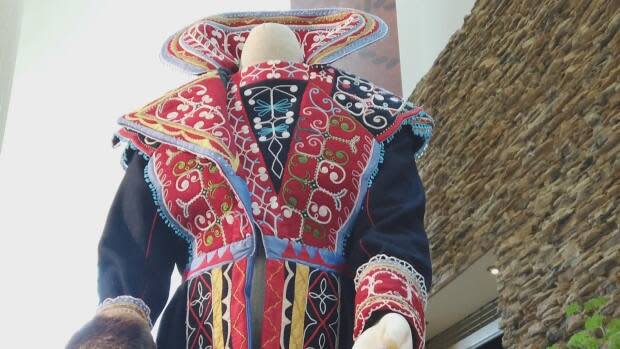
Wecenisqon said each piece on the coat is different. Each designer has a signature, which makes her question if there were only three designers who worked on the original.
"There are so many beautiful signatures," said Wecenisqon. "Every design is absolutely different."
The accessories with the coat include a knife case, pouches for carrying quills, an otter pelt, leggings and a hat.
A regalia like this would be gifted to someone highly respected, said Wecenisqon.
She said the artists were careful to honour every detail of the intricately beaded original, work that served as a touchstone to her own history.
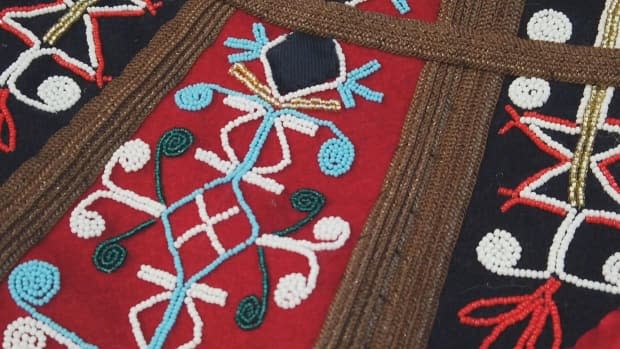
"The original piece, I think in a sense, kind of saved my inspiration about my culture, because it was always just pictures and history books," said Wecenisqon.
"So having this opportunity to re-create that old piece and seeing pictures and photos of the old original piece was so inspiring."
And for Gray, it's been a way to feel both connected and grounded.
"There's some times where we'd be working on the coat and it's kind of like, we feel that we're surrounded by our ancestors."


